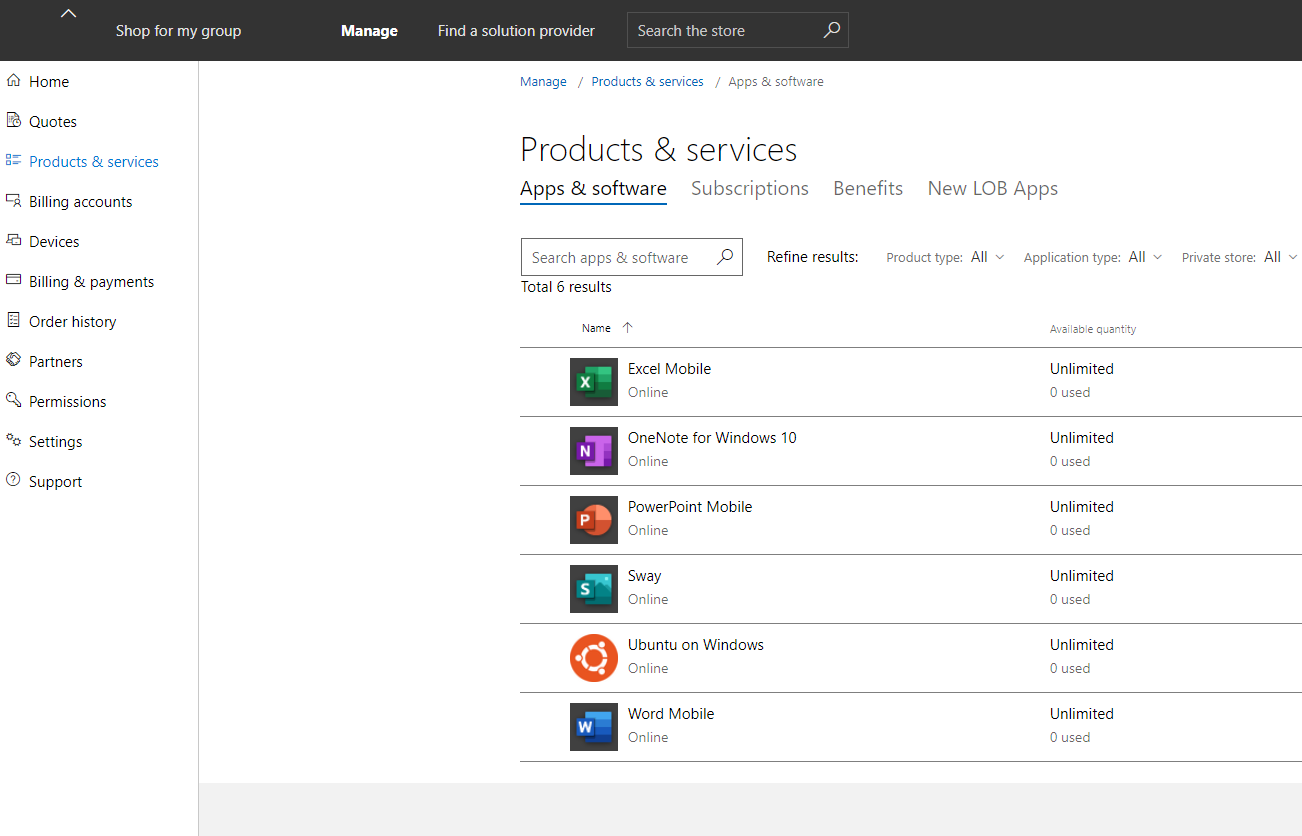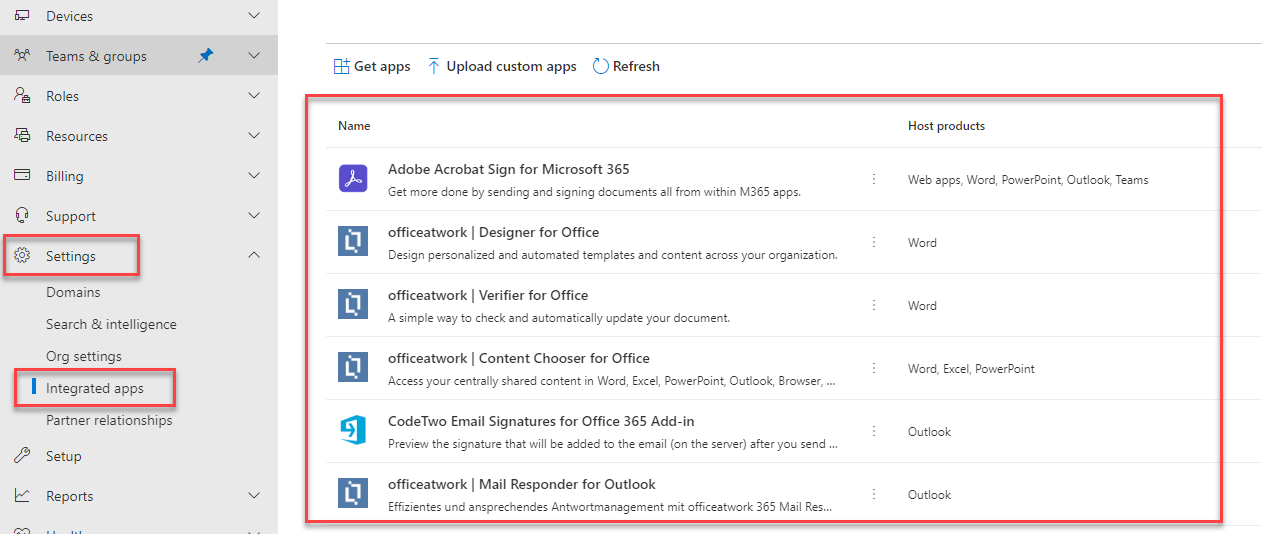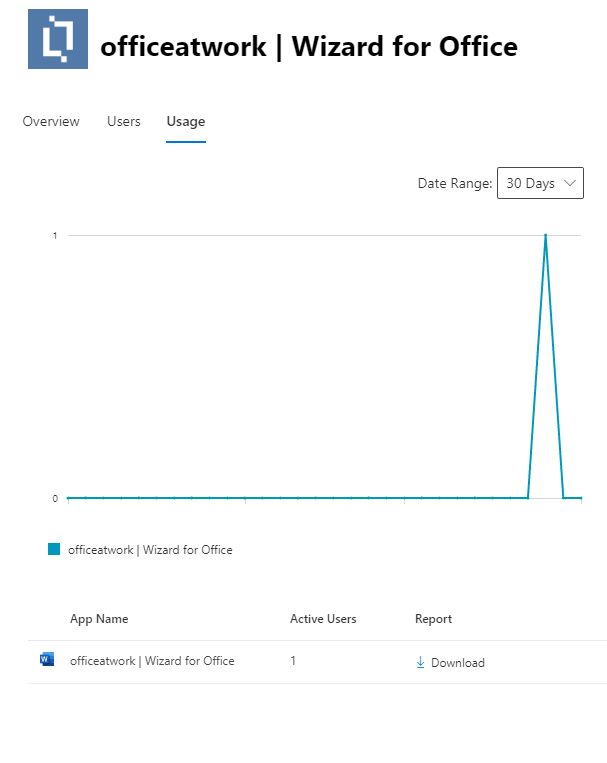Office 365 Tenant to Tenant Migration Stores Part 6
In the first part of the blog series, we took a look at the topic of planning and selecting the migration scenario and developed a long-term strategy based on the business and technical requirements and defined how the tenant migration should be implemented schematically.
This is a multi part article with the following parts:
- Office 365 Tenant to Tenant Migration Fundamentals Part 1
- Office 365 Tenant to Tenant Migration Identity Planning Part 2
One point that is often missing from the planning in many migration and integration projects is the transfer or, rather, the configuration of stores. In the tenant migration context, there are several stores that are relevant for a successful migration.
1. Windows Store - Store for Business
First up is the Windows Store or ‘Store for Business’. This is the business part of the Windows Store integrated into the operating system and is also used by a large number of companies.
It is currently still configured via the https://businessstore.microsoft.com/ portal and can be connected using the Intune Connector for distribution Windows Store App.

This brings us to the problems that can arise during the migration. If we assume the following: the Store for Business has been set up in the environment to be migrated and users have been able to install apps such as OneNote, PowerBI, PowerBI Desktop, WSL Ubuntu, PowerApps, etc. via the store, and this is not possible in the future tenant because the Store for Business has not been set up or has been disabled, user productivity can be significantly reduced.
Therefore, it must be ensured at an early stage in the planning whether and how the Store for Business is used. If this is only done after the migration and the users need quick access to the apps, system-related delays of up to 48-72 hours until the app is selected in the Store for Business must be expected.
The following points should be checked in advance:
- Store for Business status (enabled/disabled )
- Store for Business in use
- Store for Business integration in Intune
If the first check shows that Store for Business is in use, you should include the following points in your planning:
- Create a list of Store for Business installed apps
- Define collection assignment
- Check line-of-business apps
- Store for Business Apps distribution to devices (Intune)
- Install and distribute the defined and still necessary Store for Business Apps in the target environment / tenant
2. Microsoft Teams Apps
In Microsoft Teams, apps can be used to combine tools and applications in one platform, making it easier to work together. For this purpose, Microsoft provides an extensive and validated store that makes it easy to install apps. Furthermore, your own apps can be provided via this platform.
In most companies and for most requirements, only specific apps are released in the store, as these are subject to compliance and security guidelines and only more are added as needed. Therefore, it is important to deploy the team apps used in the target environment in advance.
- Create a list of the Microsoft Teams apps used
- Compliance & security check
- Extension of the team apps in the target environment
3. Microsoft 365 Apps - Office Store
Another store that is often somewhat overlooked is the Office / M365 Apps store. This is used in many companies and often contains add-ins from enterprise applications or extensions such as Mail Responder or templates. To ensure that users have the best possible transition, it is important not to restrict existing workflows and to transfer necessary extensions.

In the Office 365 admin centre, go to Settings and Integrated Apps to access all the Microsoft 365 apps in the tenant. You can view and manage these apps here.

To analyse and evaluate usage behaviour, the usage of the app over the last 90 days can be tracked and analysed. Furthermore, the ‘Users’ context menu can be used to determine the scope (Just me, Entire organisation / Specific Users/Groups) in which the Microsoft 365 app was made available.
In the planning and preparation stages, it is recommended that the following tasks be carried out:
- Create a list of integrated apps
- Check usage
- Current compliance status of apps
- Define the Microsoft 365 apps to be used in the future
- Define access policies for the apps (Just me, Entire organisation, Specific Users/Groups)
- Install the Microsoft 365 apps in the target environment (Tenant)
- Assign the defined permissions to the applications
Office 365 Tenant to Tenant Migration Part3
This section of the blog series is focused on the migration and the selection of the tool and the procedure during the migration process. Once the basic topics of strategy and identity have been clarified, we come to the next question: "How and what do we actually migrate?
Terraform Ecosystem Pipelines
The Ecosystem surrounding Terraform is growing every day. Some of the tools have become essential and need to be integrated into your CI/CD pipelines. Here are some examples using Azure DevOps.
